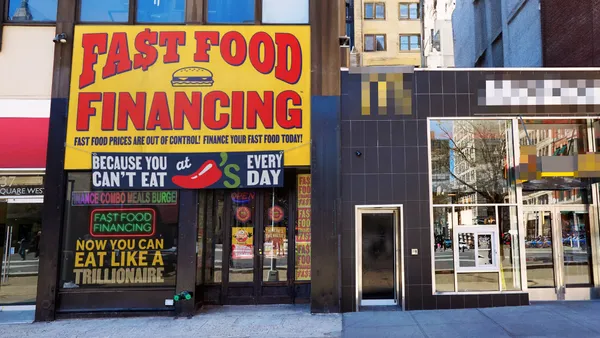As any marketer knows, successful marketing strategies involve captivating potential customers along their buying journey with the right message at the right time and, of course, in the right place. Increasingly, that right place is mobile games.
More popular than texting or social media, more than 200 million people play mobile games in the United States. And innovative restaurant brands are harnessing that skyrocketing popularity to uncover new diners and address two big challenges — data privacy concerns that have limited marketing access to new audiences and mounting economic pressures including food and labor costs. Here are four ways restaurants can improve their marketing results through mobile games.
1. Drive new users for less
Brands are increasingly relying on reward programs and loyalty apps to expand their marketing reach and overcome data privacy concerns, but those efforts often target existing fans who don’t mind paying full price. Marketing through mobile games uncovers entirely new networks of customers.
And, for restaurant brands on the hunt for new diners, mobile game players are a particularly smart audience to target. On average, they eat out about 1.7 times per week and half will choose fast food at least weekly. And they don’t mind brands reaching out during gameplay. In fact, 56% reported that they are more likely to buy from a brand that is featured in their favorite game.
They also appreciate a good deal. Some 70% of respondents in Savanta’s 2023 gaming report said that they mainly play games on their phones, and 52% play free games that charge users only to unlock premium features.
What’s more, it’s cheaper to reach that eager audience through mobile games than other digital advertising alternatives. With Mobivity’s help, through its Connected Rewards solution, a major global convenience store brand recently acquired 158,000 new consumers in 45 days through mobile games. Those new consumers arrived nearly 30% faster with an 82% lower acquisition cost than other digital advertising channels such as social media, influencer marketing and digital ad networks.
2. Increase loyalty and visits
Persuading a customer to make a first-time visit is one thing; building a loyal customer who keeps returning is another. Through mobile game marketing, restaurant brands can do just that. In fact, Mobivity data finds that up to 43% of first-time customers don’t just leave with their redeemed offer, they also make multiple purchases — either with friends who joined them or during future visits.
The right in-game reward can spark new traffic to a restaurant, such as a coupon for a free milkshake so a gamer can celebrate reaching a new level. And they can increase loyalty through in-game rewards for extra discounts or free products for additional visits and more rewards when mobile gamers sign up for the brand’s loyalty program.
Restaurant brands also are boosting sales by helping gamers earn in-game features when they order food, another tactic to promote return visits. In a partnership with the game Street Fighter, for example, Chipotle gave away “Fighter Coins” with in-app or online food purchases.
3. Promote new products and offerings
Mobile gamers often bring friends to dine with them when they redeem rewards. But they’re also immersed in expansive virtual worlds, and the wider reach of their digital word-of-mouth can be even more effective at promoting new products and offerings.
Smart marketers will build in-game rewards around the latest seasonal offer or new value menu item that encourage mobile users to share the reward or the game with the rewards to their online communities.
McDonald’s, for example, created a mobile word game with a “reward” that involved uncovering which menu item had joined its dollar menu. Mobile users shared their scores and the link to the game on social media, encouraging their own friends and followers to do the same.
4. Reach new customers all the time
We’re on our phones five hours a day, and our usage peaks at different times depending on various factors. Evening is the most popular time for most users, especially Millennials, Gen X and women, according to ironSource. Both the afternoon and evening, however, draw more men and members of Gen Z.
But, via mobile gaming,restaurant brands can reach prospective diners at any hour, including traditionally low traffic times as gamers check in throughout the day. In fact, while 28% of mobile users scroll through their social media before going to bed and another 22% scan their texts before going to bed, 30% check in on their mobile games. A well-timed reward for a free morning coffee with the purchase of the new breakfast pastry might nurture a few sweet dreams, and a gamer ready to partake in the morning.
Mobile gaming is an emerging marketing channel for restaurants, but it quickly could become a primary channel as playing games is the #1 preferred form of entertainment. But any launch of a new marketing strategy must be intentional, and easy adoption is critical in mobile gaming.
Mobivity’s Connected Rewards platform helps connect brand marketers with mobile game publishers to deliver in-game rewards strategically and at scale. This ensures restaurant offers are displayed in a progressing sequence, in relation to proximity, or according to other relevant parameters. A quickly loading mobile-friendly page, a simple form to sign up and text-to-join options are also ways to increase the effectiveness of campaigns and marketing spend.
With the right partners and tools in place, the new opportunities that mobile gaming presents are a win-win for restaurant brands and the new diners they entice.










